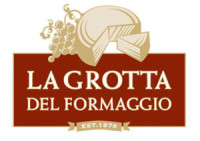Olive Oil Shortage: Pricing and Supply Impacting Consumers and Retailers
Impact of Climate Change on Olive Oil Supply
Climate change has presented notable challenges for Italian olive oil producers, with events such as fires, plagues, insects, droughts, and extreme weather affecting olive-growing regions in Europe. These challenges are leading to a more volatile market for olive oil, making it harder for retailers to predict and plan for fluctuations in prices. Consumers are facing higher prices as a result of these challenges in the production of olive oil.

Thousands of Olive Trees Destroyed by Wildfires in Tuscany
High temperatures, windy weather and dry soil served as a catalyst for the estimated 279 wildfires burning across the central Italian region.
Retailers are facing difficulties in managing rising costs while also dealing with consumer dissatisfaction regarding prices. Retailers are having to adapt their strategies to address the changing market conditions brought on by climate change’s impact on the olive oil industry.
Retail Strategies for Olive Oils
Smaller estate premium olive oils have been less challenged by all the climate and supply issues. Having said that, smaller estate premium olive oils is exactly that – small batches and premium. The cost of premium olive oil itself has slightly increased, but the difference between the rising cost of conventional olive oil has risen enough to make the gap between conventional and premium olive oil not significant.
For retailers that carry both conventional and premium olive oils, a retail strategy is to showcase premium estate olive oils alongside alternative oils like rice bran and grapeseed oil, to keep a pricing gap and economical choice for consumers. For consumers that don’t have experience with alternative oils like grapeseed or rice oil, offering discounts to encourage consumers to try and expand their pantry is beneficial.
Cooking Strategies and Behaviour of different oils
Premium olive oil, rice bran oil, and grapeseed oil offer numerous health benefits due to their high levels of antioxidants and monounsaturated fats. Olive oil is known for its distinct flavor profile, while rice bran oil has a mild taste and high smoke point, making it ideal for frying. Grapeseed oil is light in flavor with a neutral taste, perfect for salad dressings.
Avocado oil has gained recognition for its exceptional ability to withstand multiple rounds of frying without breaking down, rendering it a cost-effective option for commercial kitchens and home cooks alike. In comparison, olive oil is known to have a lower smoke point than avocado oil, making it less suitable for high-heat cooking methods like deep-frying. Rice oil, on the other hand, is often used in Asian cuisines due to its mild flavor and high smoke point, but it may not be as versatile or economical as avocado oil in frying applications.
Similarly, grapeseed oil is another popular choice for frying due to its neutral taste and high smoke point; however, avocado oil’s durability under heat may give it an edge for extended or repeated frying sessions. When considering both performance and cost-effectiveness, avocado oil emerges as a practical option for establishments seeking a reliable frying agent that can maintain quality over multiple uses. This resilience not only helps in preserving the flavor profile of fried foods but also presents an economic advantage by reducing the frequency of oil changes required during cooking operations.
In addition to their nutritional value, these oils also vary in viscosity. Olive oil tends to be thicker compared to rice bran oil and grapeseed oil, which have a lighter consistency. When choosing an oil for cooking or dressing, consider the viscosity desired for your dish and the specific flavors you want to impart.
While olive oil pricing continues to rise, there are alternatives that allow retailers to adapt and offer consumers great value priced options while still maintaining or growing their shopping basket. Ask our team how we can help.


+ There are no comments
Add yours